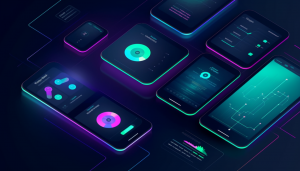What are we hearing a lot about (besides AI)?
- Neumorphism: Neumorphic design, characterized by soft, extruded shapes and shadows, was gaining traction. This design approach aims to create a tactile and realistic interface.
- Microinteractions: Microinteractions involve subtle animations or feedback that enhance the user experience. They contribute to a more engaging and responsive interface.
- Voice User Interface (VUI): With the rise of voice-activated devices, integrating voice interactions into apps was becoming more prevalent. This trend was particularly notable in virtual assistants and smart home applications.
- Minimalism and Simplified UI: Streamlined and minimalist user interfaces were still in vogue, emphasizing simplicity, clarity, and ease of use. This often involved the use of ample white space, clean typography, and simple iconography.
- Augmented Reality (AR) Integration: In certain industries, especially gaming and retail, there was a growing interest in integrating augmented reality features to enhance user experiences.
- Personalization: Apps were increasingly focusing on providing personalized experiences tailored to individual user preferences, behaviors, and demographics.
- Accessibility: Designing apps with accessibility in mind, ensuring they are usable by individuals with disabilities, was gaining prominence as a crucial aspect of user experience design.
It’s important to keep in mind that design trends can change rapidly, and new technologies or cultural shifts can influence the direction of app design. To get the latest information, I recommend checking recent articles, design publications, and community forums where designers share insights and trends.






